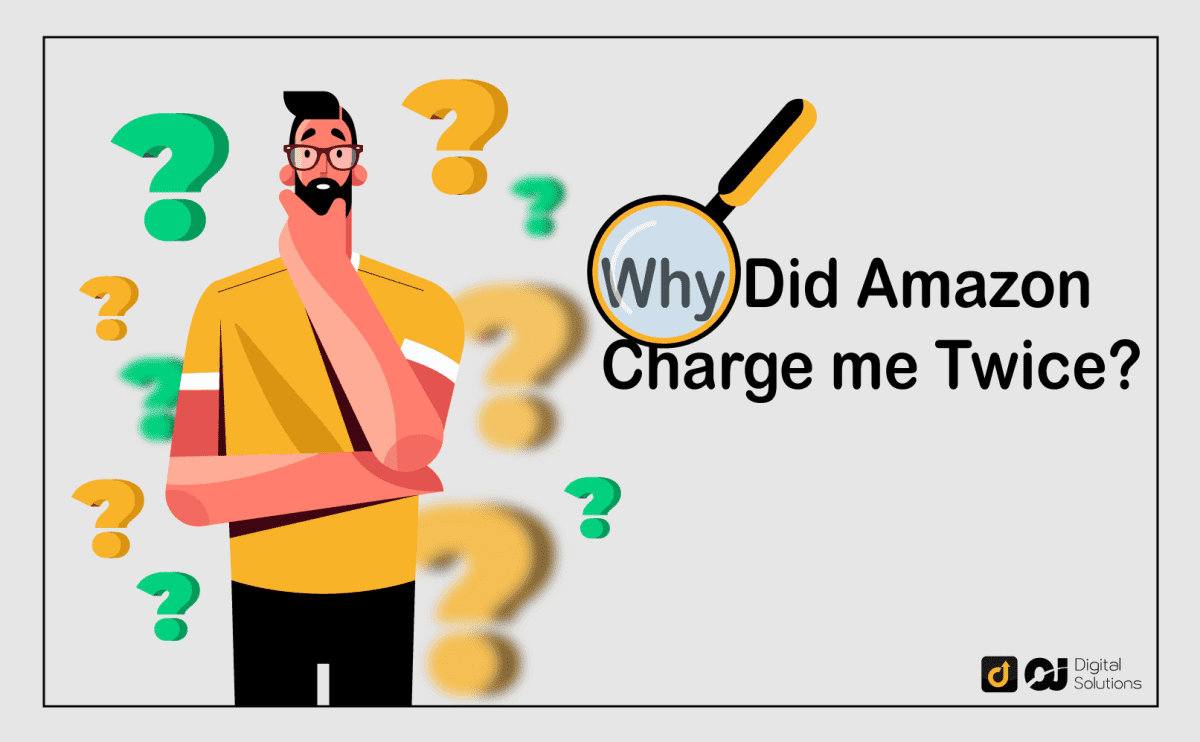When you see that extra charge on your credit card bill, you might be asking yourself, “Why did Amazon charge me twice?”
It’s possible that you either subscribed to an extra Amazon service or the “double-charge” is part of a normal process without the intention of charging you for more money.
I know it’s stressful when you’re charged more than what you’re supposed to pay, it happened to me.
And that’s why I want to help you navigate through a situation involving an apparent Amazon duplicate charge.
If you want to learn more about this controversial topic, read on.
Why Did Amazon Charge me Twice For The Same Amount?
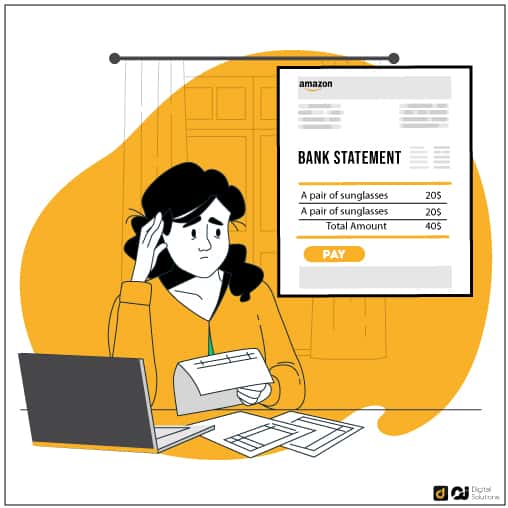
You’re positive you bought just one pair of sunglasses for $20 today.
However, a month later, you see that your credit card billing history indicates that you have two Amazon purchases in your name, with each purchase costing $20.
Your first reaction might be, “Why on earth would Amazon charge me twice for the same item?!”
However, before you get all anxious and tense, you should know that amazon will usually automatically refund the double charge.
If they haven’t, consider the following possibilities first:
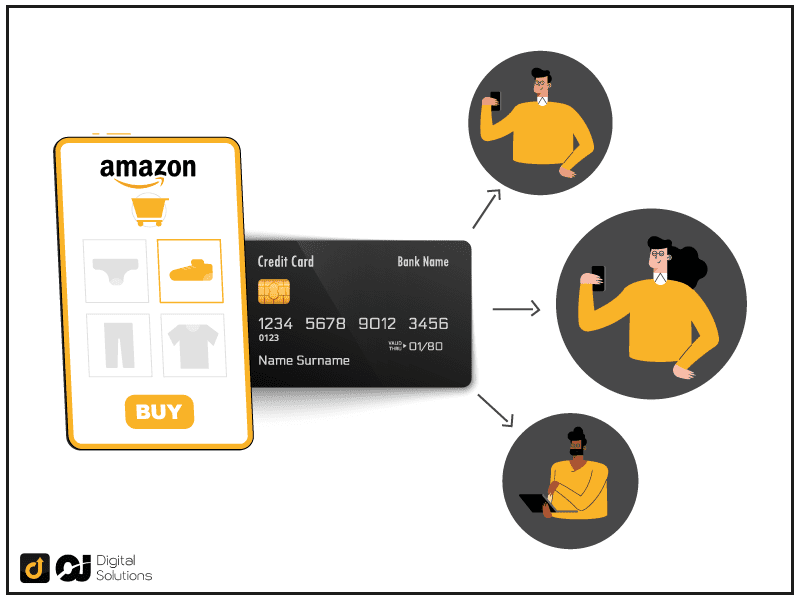
- You may have taken out an Amazon Prime membership on more than one account (you will see “Amazon Digital charge” multiple times.
- You have more than one Amazon account, where another person has access to your other account/s and your credit card information.
- Your duplicate charge may have been just a purchase authorization.
Let’s look at each possibility one by one so that you can clear your mind of any worry if you were charged twice for the same amount on your Amazon purchases.
Having Duplicate Amazon or Amazon Prime Accounts
More is not always better, especially if you want to avoid confusion regarding double charges. It’s possible that when you see a duplicate charge on your statement of account, you probably have more than one Amazon account to your name.
But more importantly, if you gave another person access to your other Amazon accounts AND/OR your credit card details, there is a higher chance you will incur a double charge.
Mistaking a Debit Card Purchase Authorization for a Duplicate Charge

At first glance, your credit card processing account may indicate two Amazon charges even when you strongly believe there should only be one charge.
But all this confusion can be clarified if you know how credit cards work.
Corsair, a long-running gaming gear manufacturer and online seller mentions that purchase authorizations may look like pending duplicate charges.
The gaming industry firm further explains that when a merchant (for example, Amazon or Corsair) issues an authorization hold to the bank that issued the credit card, “the issuing bank places an authorization equal to the cost of the entire order…” An authorization hold essentially means a portion of your credit line which is put on hold or reserved for your Amazon transaction.
For example, if you bought a pair of sunglasses costing $20 on October 22 and you received a charge of $20 on that day, more often than not, the charge on your bill or statement for October 22 is a hold, not an actual charge.
The actual charge that Amazon will impose would be later than October 22. In fact, the later date is the same as the shipping date, when Amazon actually delivers your product from a warehouse to your home. The $20 “charged” from your card on October 22 is the amount that is put on hold or locked from any other transaction to make way for the actual charge day, which is sometime after the 22nd.
Now let’s assume the same sunglasses you ordered on the 22nd were shipped on October 26.
In this case, there is a high probability you will see a $20 charge for October 22 and another $20 charge for October 26. The charge on the 26th is the “real charge” while the October 22 charge is more likely a hold.
Now, what if, instead of having a duplicate charge, you see two or more charges on your billing statement with different dollar amounts? Read on to learn more.
Why You See Multiple Charges on Your Bank Account For Different Amounts When You Only Placed One Order
Suppose you incur charges with different amounts despite placing only one order. In that case, there might also be the possibility that you have multiple Amazon accounts and other people have access to those accounts and your credit card details.
But other than those possibilities, there are also reasonable scenarios like the following:
- Your single order was split into multiple orders
- Amazon Prime may have charged you for a service you thought was free
Splitting Into Multiple Orders or Multiple Shipments
One key rule may help you understand why Amazon splits orders. The e-commerce platform charges per shipment, not per item ordered. For example, if you ordered one piece of swimwear and a pair of sunglasses in one transaction, you might think, “Amazon would only charge me once since I bought the two items on the same day.”
However, even in this case, Amazon may still charge you twice.
How? The following situations would help you understand how Amazon splits orders:
- The swimwear you bought was sold and dispatched by a third-party seller, while the sunglasses were sold and dispatched by Amazon itself.
- Your sunglasses came from a fulfillment center (essentially an Amazon warehouse) nearer to your house, while your swimwear came from a center located in another state or country.
- The swimwear and sunglasses you bought have different availability, and you selected the “I want my items faster. Ship items as they become available” option at checkout.
- The two items you purchased were delivered to different addresses.
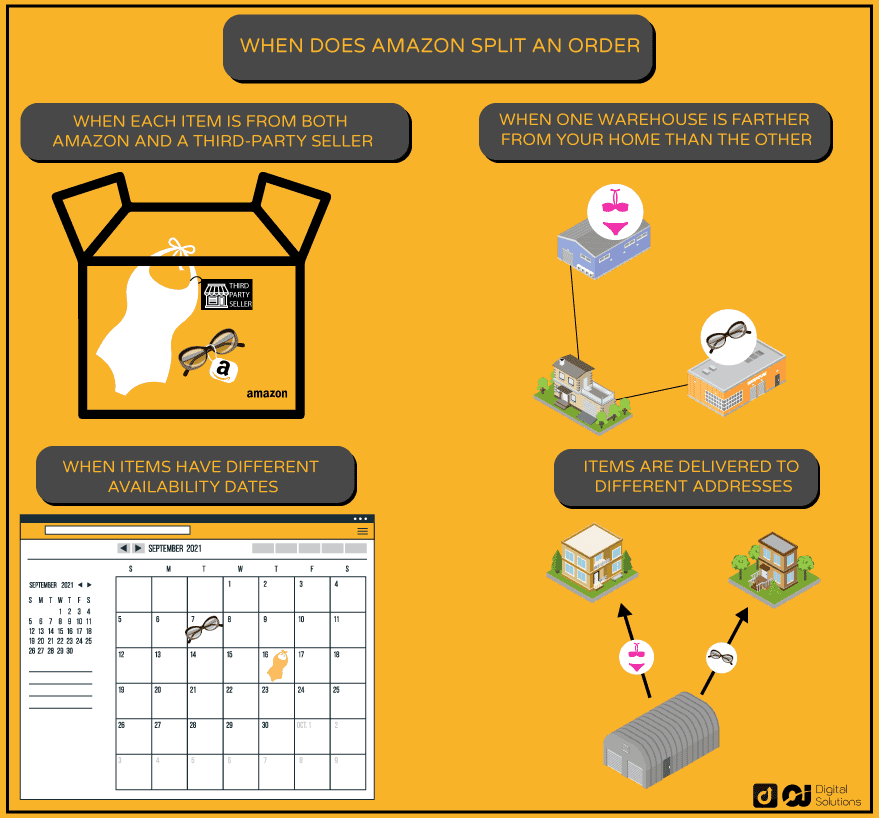
For the first possibility, in case you’re not aware, Amazon sells basically two groups of products.
- The first group consists of products owned by Amazon itself.
- The second group is made up of goods owned by third-party sellers or businesses other than Amazon but who use the platform as their online store.
If you look closely, you will notice that two shipments were involved in each of the four cases above. For instance, in the first case, package one was delivered by a third-party seller, while package two was conveyed by Amazon itself.
For case two, the first shipment involves delivery from a warehouse nearer your place’s address. The other shipment is delivered from a fulfillment center that is located farther from your residence.
The fourth case, on the other hand, involves a delivery where one product is shipped to one address, and another item is shipped to a different one. So don’t be surprised if you see two purchases for two different dates on your credit card bill, even if you bought the two items on the same day or transaction.
Amazon charges per shipment, not per product ordered. But what if, despite all your analysis of your credit card or online payment service bill, you are still firmly convinced that your double charge does not come from any of the four cases mentioned.
What then? The next section might interest you if you’re an Amazon Prime subscriber.
Lesser-known Amazon Prime Charges
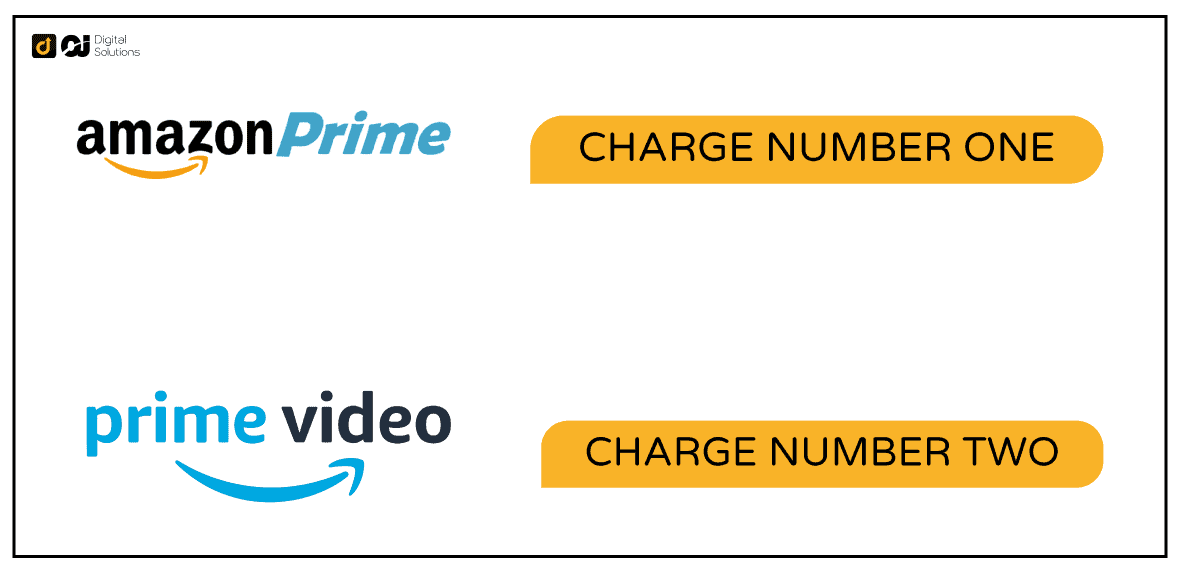
Though Amazon Prime offers perks like same-day package delivery and FREE digital content, you must know the difference between Prime Video and Amazon Prime. Contrary to what many think, subscribing to Amazon Prime doesn’t automatically lead to free Prime Video.
Amazon Prime Video, the e-commerce company’s on-demand streaming service, charges a fee that is separate from the fee imposed for an Amazon Prime subscription.
So if you want to watch live streaming content from Prime Video, you need to pay extra. Therefore, don’t be surprised even if, despite the fact you’ve already paid for your Amazon Prime subscription, you might still see a charge on your bank statement if you watched some videos on Amazon Prime.
If you’re not interested in Prime Video, here’s how to cancel Amazon Prime video.
Now that I’ve discussed all the possible reasons why your debit card or credit card was double charged, it’s time for some action.
In particular, what course of action can you take if you think you’ve been charged once too often.
What To Do If Amazon Charges You Twice
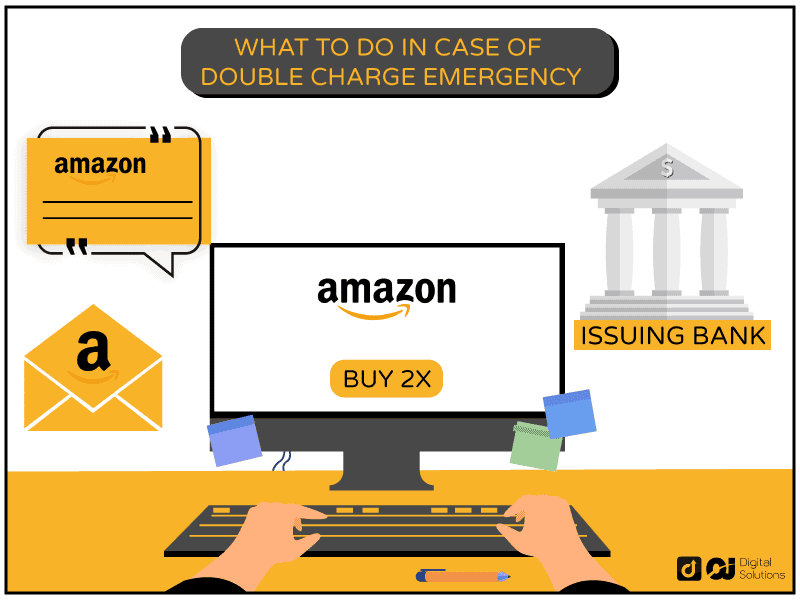
Instead of being irritated and saying to yourself, “It’s so annoying that Amazon keeps charging and refunding me!,” every time Amazon charges you twice what you expect, the first thing to do is to take a deep breath and keep calm.
No, seriously. Once you are calm, you have a better chance of contacting your issuing bank or Amazon to file your charge dispute.
After all, the bank which issued your debit card or credit card, or Amazon, will more likely resolve or refund your double charge if you approach its customer service staff in a more relaxed and courteous manner.
After you feel more settled than startled, calmly contact Amazon customer service (more on this in the FAQ section, which is coming up shortly) or your issuing bank to discuss any charge disputes or missing refunds related to multiple charges.
One advantage of contacting your issuing bank is that in case the problem lies with authorization hold problems, the bank is the most knowledgeable institution which can tell you why funds on your account may be unavailable and clarify how long they hold payment authorizations for online orders.
In case you bought from a third-party seller (3P seller), contacting your bank or Amazon is still the best course of action, given that Amazon is the one who communicates to 3P sellers in case of charge disputes, which sometimes lead to chargebacks.
FAQ – Frequently Ask Questions
How Do I Contact Amazon about a Double Charge?
There are three ways to contact Amazon Customer Service for duplicate charges:
- Calling the e-commerce company’s toll free number, which is (+1) 888-280-4331.
- Contacting the platform’s chat service
- Emailing Amazon
Can I Chat with Amazon Customer Service?
Yes. Amazon’s chat service for customers is powered by actual humans, in addition to automated software called chatbots.
Until when Can I Dispute a Duplicate Charge?
According to the Federal Trade Commission of the U.S. government, you have to dispute a duplicate charge or any other credit card billing issue within 60 days from the date you received the statement containing the said issue.
The Bottom Line
The next time somebody asks you “Why did Amazon charge me twice?,” you won’t think twice about the answer you’ll give.
You can tell that person that his double charge may probably be just due to credit card authorization holds, multiple Amazon accounts where many people have access, lesser-known Amazon charges, or the platform’s practice of splitting an order into multiple shipments.
Hopefully, with all the things I’ve discussed here, you’ll be able to help yourself and others when you get into the tricky situation of having double charges in your bank or card statement due to your Amazon purchases.
Did you benefit from this article?
What other areas of Amazon would you like me to cover in the future?
Please feel free to leave your thoughts and suggestions in the comments section below.

